Thursday – February 7, 2019
Cairo is not a beautiful city. With almost twenty-five million people, the capital city is crowded with planned and “unplanned” sand-colored buildings. All the streets are congested with too many vehicles and driving from one place to another is a slow process with car horns blaring all around. There are few traffic lights and no one follows any ‘rules of the road’ or extends courtesy to other drivers. Below are a few photos I took from our bus this morning:



We arrived at the Museum of Islamic Art with our armed police car chaperones and were led into the museum. The architecture of the museum building reminded me of structures I saw in Arabia last year.
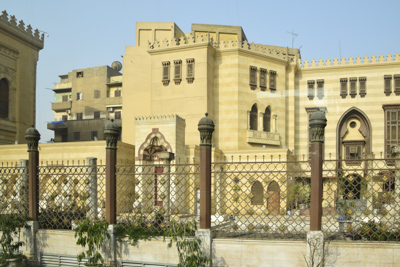
A car bomb had attacked the Cairo Police Headquarters across the street from the museum in 2014 and caused considerable damage to the building and destroyed many artifacts. The police headquarters is still a bombed-out shell.
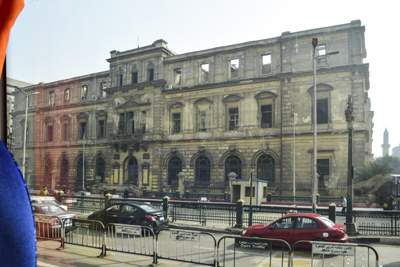
The Museum of Islamic Arts had also experienced damage from the blast however it re-opened in January 2017 after extensive renovations.
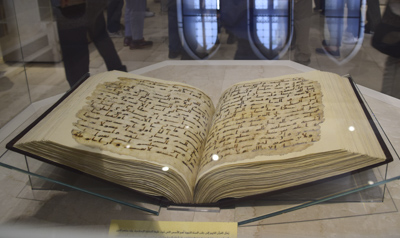

The museum has a sizable collection of Islamic artifacts including rare copies of the Qur’an, Arabian carpets, coins, rare glass and pottery, and rare silver and wooden carvings. There were beautiful objects dating from the Fatimid and the Mamluk periods of history through the Ottoman Empire’s control of the region.

After visiting the museum, we drove to the historic Islamic center of Cairo. The bus stopped and let us out next to a small park near the Al-Hussain Mosque.
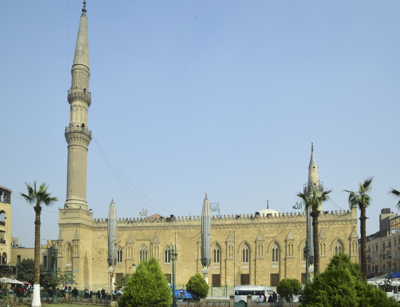
The mosque was built in 1154 and is considered to be one of the holiest Islamic sites in Egypt. It was named for Muhammad’s grandson and it is believed that his head is buried on the grounds of the mosque.

We walked down the narrow street and entered the Khan El-Khalili souk. Historically this was the medieval market and commercial center of Cairo.
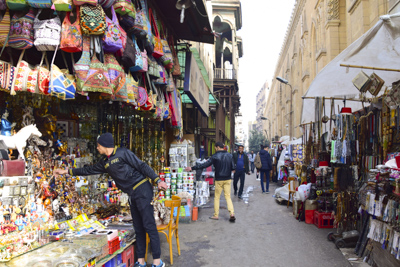
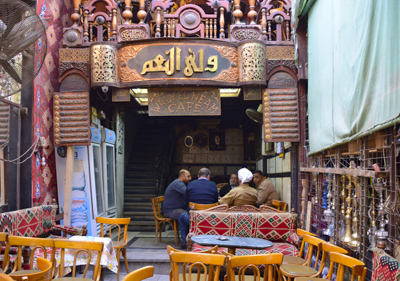

There had been terrorist attacks in the market in 2005 and 2009 killing several people. These senseless attacks drove tourists away from the Khan el-Khalili souk and also the country of Egypt for some time.
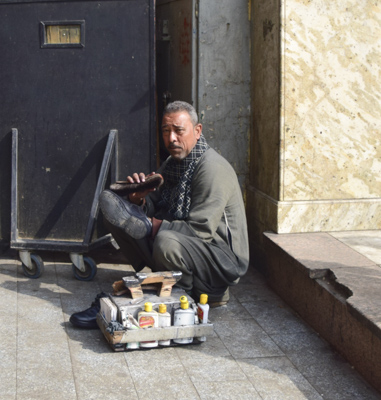
The gate below was built in 1511 by the Sultan al-Ghuri, the last powerful Mamluk sultan of Cairo.

The towers below are part of Al-Azhar University, Egypt’s oldest and most prestigious degree-granting university. It was founded in 972 by the Fatimids as the centre of Islamic learning.
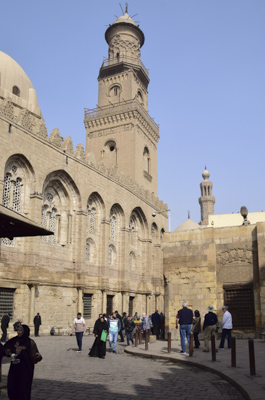
Always fun to see a bride:
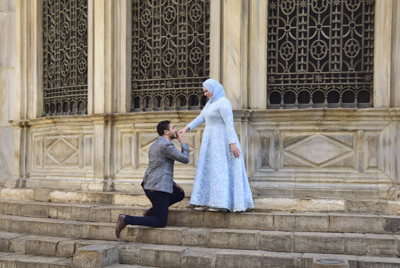

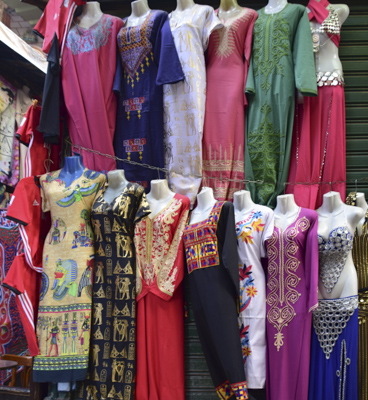
The women in the two photos below, asked me to take their photos.

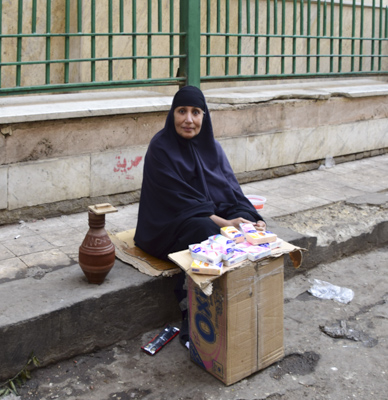

After Jeff and I wandered through the labyrinthine streets and alleyways of Khan el-Khalili, we rejoined our tour group and boarded the bus for a drive through another section of the city. Views from the bus:
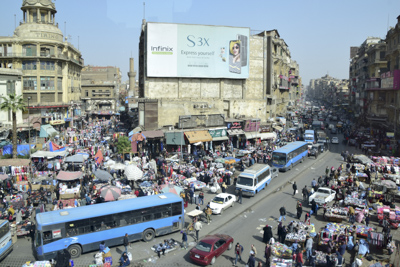
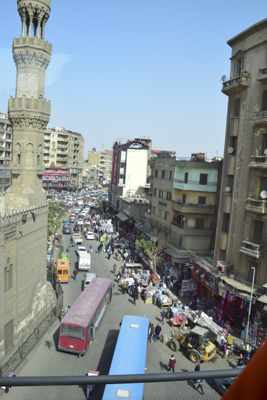
Our next stop was the Saladin Citadel of Cairo, one of the best preserved fortresses from the middle ages in the world. The medieval Islamic fortification was located on a hill near the historic center of Cairo. The complex of mosques and museums is a UNESCO World Heritage Site.

Salah al-Din, the first sultan of Egypt, fortified the Citadel in about 1180 AD and led a military campaign against the European Crusaders.
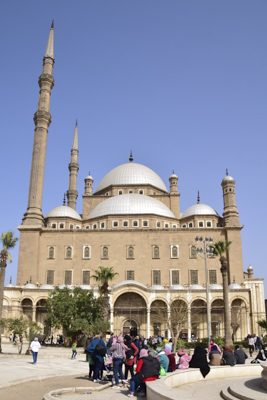
There are three main mosques at the Citadel and the earliest was built in 1318. We visited the Mosque of Muhammad Ali Pasha which dates from 1830. He was buried in a tomb carved out of Carrara marble in the courtyard of the mosque

The impressive interior walls and pillars of the mosque were lined with alabaster.

Maged had warned us that it was a school holiday and there would be many Egyptian families visiting from small villages in rural parts of the country. They were unaccustomed to seeing western tourists so the children like to take pictures with us to take back to school to show their classmates. They especially liked taking “selfies!” I had had a similar experience in China with rural Chinese tourists several years ago.
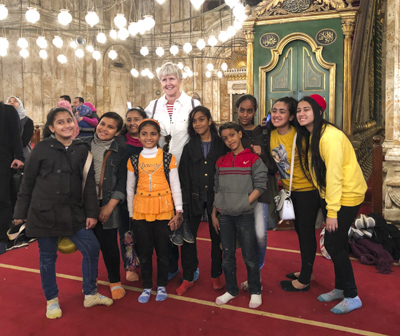
We had fun politely posing with lots of giggling children. Almost the entire extended family posed with us outside the Mohammad Ali Mosque:
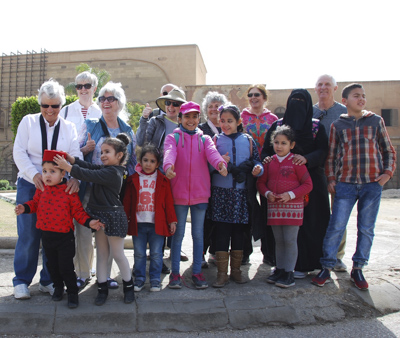
We left the Citadel and drove into Al-Azhar Park where families were picnicking and playing games. We had lunch in one of the restaurants located in the park.


After a tasty Lebanese lunch, we drove to the beautiful Ben Ezra Synagogue. According to local folklore, this was the site where baby Moses was found. Although the current building dates to the 1890s, the synagogue was founded in 882 AD. I was able to take a photo of the exterior of the synagogue, but unfortunately photography was not allowed inside the beautiful sanctuary.

Ben Ezra Synagogue is well known because a treasure trove of 300,000 ancient Hebrew, Aramaic and Judeo-Arabic manuscripts were found there in a storeroom in 1753. This collection, known as the Cairo Geniza, was divided among several world-wide academic libraries. In the 1920s, there were 80,000 people in Egypt’s Jewish community. As a result of emigration to Israel and the United States, today there are less than a dozen people of Jewish/Egyptian ancestry residing in Cairo. Ben Ezra Synagogue currently serves as a tourist attraction and museum.

We left the synagogue and walked along several narrow alleyways until we reached an arch with a wooden sign which read: “The Cavern Church and the martyrs Serguis & Bacchus known as Abu Serga.” The church is believed to have been built on the site where the Christian Holy Family rested at the end of their journey into Egypt.
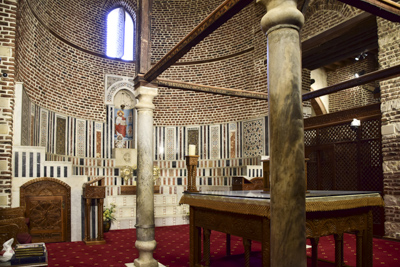
Saints Sergius and Bacchus Church dates to the 4th century. It is one of the oldest Coptic churches in Egypt and has significant historical importance. Maged explained that the Coptic Orthodox Church is one of the most ancient Christian churches in the world, founded in the 1st century AD in Egypt by Saint Mark the Apostle. Copts are the indigenous people of Egypt and are the direct descendants of the ancient Egyptians.